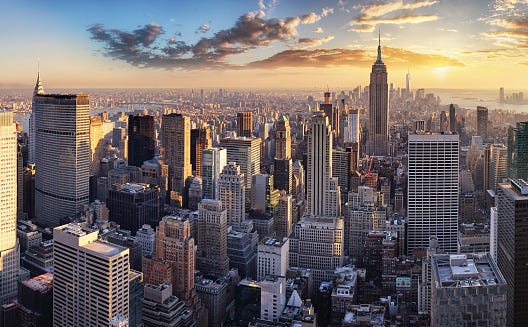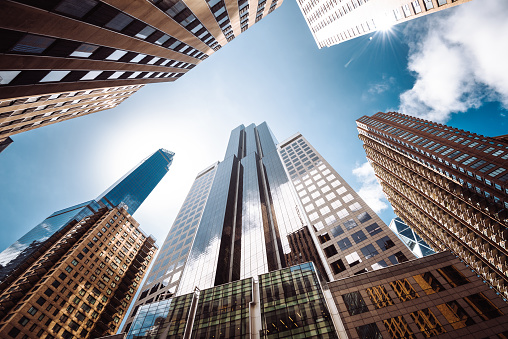If you’re a homeowner, you savor inflation and higher interest rates. For this reason, homeowners on average are wealthier than renters.
Although real estate correlates to the broader market and can be as volatile as any other asset class in the short-term, in the long-term, it is seen as an inflationary proof, stable passive income safe haven.
It acts as a strategic tailwind towards rising rents, property prices, and negative real mortgage rates. Since covid struck, Americans and foreigners have bid up anything they could find in the hot states causing a price war, pushing out homeowners in the process.
Real estate is one of my favorite asset classes for obvious reasons. It offers a variety of income sources from rent to appreciable equity and is a classic hard physical tangible asset that you can depreciate as it appreciates. Not to mention it also offers utility the more you use it. Owning something physical signifies wealth and is the best way to build a stable balance sheet.
As a record number of homes were sold across the nation during a deadly pandemic, this lead to massive buying sprees and frustration. It also indicated consumer balance sheets were strong and diversified with pumped-up fiscal and monetary stimulus and that Americans cherish work-life balance.
The Sunbelt states and suburbia got their attention in the first year and a half once lockdowns went into effect and rents and purchase prices plummeted in the Big Apple to L.A., the most condensed and expensive cities in the U.S.
Families, Millennials, and retirees flooded to find more space with backyards, basements, and peace not chaos and commuting secretly missing out on the bargains in cities.
Up until the vaccine rollout in late 2020, coastal cities, where the most lucrative positions and real estate prices reside, plummeted. Office space was vacant, landlords were offering various perks such as a few free months of rent and it was actually possible to get downtown from uptown in roughly 20 mins instead of blocking out the usual hour, not to mention traffic or loud noise. Kiosks closed, tourists were gone, and millions of commuters and officers saved the trip. As someone who witnessed this transformation, the city truly felt like a ghost town that never existed. With no out the door Sweetgreen runs or taxi hails, the city couldn’t run without its crazy visitors and residents. Beneath the calm before the storm, the city was gearing up for its ultimate buying opportunity at the dip.

At the Tipy Top
If you’re a prudent investor in life to the markets, the first golden rule is to not equate emotions to investing. Keep emotions at bay to make accurate decisions. Sure, trimming stocks isn’t a bad idea but dumping all of them simply because they are at all-time highs isn’t a wise move since the markets eventually go up over time, as long as you are invested in a diversified basket of securities.
Nowadays when it comes to real estate, it seems like every market possible is popular for their own reasons. Too much land or not enough land, it’s going to be off the market in no time. The middle of nowhere in Montana to Bushwick is bustling and so are prices.
Not to mention foreigners are escalating their bids in rental commercial properties, multifamily properties, and office spaces, pouring billions into cheap American land acting as a hedge against inflation to diversify.
Since the start of the pandemic, domestic and overseas buyers stayed out of the market. This created a backlog as many foreign institutions have been allocating more capital to real estate.
A lood of overseas foreign buyers-predominantly from Singapore, China, Canada, and UK with their pension funds, overseas funds, sovereign wealth funds, and other foreign institutions bought roughly $70 billion of US commercial real estate in 2021.
If you are a real New Yorker or Los Angelina, you know something about the public markets and your prized city many might not believe.
It always roars back and boy did the cities prove economists, agents, construction developers, and analysts wrong!
How long will this buying spree last?
The greatest indicator that will place borrowing on hold will be higher mortgage rates through the Fed’s hawkish plans.

Rush To Nowhere
Due to the unpredictable nature of the virus, office space and the retail industry in cities that were hit the hardest have wavered, balancing on a tectonic plate. Small business owners, tourist shops, restaurants, and retail that employ a large share of city employees, have had a tough ride navigating the turbulence to get back on their feet. Only recently are small businesses getting the love they deserve, as covid cases have declined, shop local, and mask mandates have been lifted.
Thankfully, vaccinations are our only cure towards normalcy, and buyers and sellers across the nation haven’t looked back since. With pent-up demand for fine dining, leisurely strolls, events, real life again, cities are the prime spot. Coastal cities will never falter since they are major hubs for transportation, tourism, travel, work, better education, wealth, and population growth, something we all crave in some way or another.
Although mortgages rates have hit their high since 2019 at 4% and the housing market and consumer reports readings are at their lowest point in 10 years due to 7.5% inflation in January, the housing market is still on fire. NYC and San Francisco made an astonishing comeback despite low inventory and gauged prices, with homes on the market for less than 2 weeks sold at juicy premiums.
With the U.S. median home price at around ~$360k with a national price jump of ~18% last year, I’m predicting a dramatic slow down as interest rates creep up. Most buyers don’t have enough cash to cover a 20% down payment, let alone an emergency savings account. Luckily, cashed-up buyers won’t have to face this fierce competition and rushed decision-making against marginal buyers in this speculative market this time as sellers and buyers will be more cautious but assertive with whom they are transacting with as lenders are more vigilant about the creditworthiness of borrowers as rates rise.
The Fed is ready to unleash its brakes in March, increasing interest rates by 50 bps = 0.5% 6–7x many financial institutions speculate which will calm down inflation-consumer demand, supply chain constraints and hopefully allow wages to catch up with tight inflation, currently eaten up by inflation in many sectors hitting consumer’s pockets.
Although my favorite cities of NYC and LA are wonderful in their own ways, they aren’t economically feasible for a majority of Americans who are financially illiterate, don’t have more than 1 week of emergency savings, rely on 1 income, and are badly indebted within toxic debt.
Even HENRYs (High Earners, Not Rich Yet) are forever struggling and in debt due to poor spending habits and inflationary lifestyle creep. In this case, cities have never offered any immediate relief. It’s all on the individual to aggressively save and invest to charge ahead.
Here are several top fixes for cities:
-Corrupt infrastructure
-Environment-emissions, pollution,
-Homelessness
-Crime
-Cost of living
(Lower taxes?)
Despite these factors, the unique relentless spirit and shine of New York City has notably led to a remarkably sharp turnaround. Within a few months of 2021, sales and rental markets in NYC exceeded pre-pandemic prices and according to the NYT: “More apartments were sold in Manhattan in the third quarter of 2021 than at any other time in the last 32 years. Sales in Brooklyn and Queens pushed further into record territory. And some renters, who took advantage of deep discounts just a year ago, are now facing the sticker shock of 30 or 40 percent rent hikes.”
Since buying a home is the most expensive purchase Americans will make in their lives, ahead of higher-educaiton and transportation costs above inflation, this is not a decision that should be taken lightly or quickly. Yet in this hot housing market where workers are asked to come back to a city they thought would be vacant forever, affordable housing in suburbia and back in NYC is nowhere to be found. It has quickly vanished due to the city’s rapid rebound, largely fueled by luxury markets and foreign cashed-up buyers.
The real estate market broke major records, especially in NYC where the median home price jumped sporadically in a few weeks.
Here are some additional real estate records that were shattered:
-The typical U.S. home sold for nearly $400,000 — up 24.4 percent, year over year
-Home supply dropped to its lowest level in recorded history — down 23 percent, year over year.
-The typical home sold in just 15 days — the lowest median number of days on the market in recorded history.
-More than 60 percent of homes went off the market within two weeks.
-Double-digit growth in the last 2 years

Hot Spot or Great View
Thankfully NYC isn’t a hot mess in terms of cases anymore with one of the highest vaccination rates in the country but with prices, the median sale price in Q3 of 2021 was $1.115m, early 9% higher than in the same quarter in 2019.
This sudden turnaround indicates the return to city life and togetherness. Due to the sky(rise) cost of living, employers are more competitive than ever, luring top talent and increasing wages by over 30% on Wall Street and in many other industries.
A decent percentage of renters and buyers who left the city to their beach homes and or childhood homes have returned to their offices and normal routines. Brooklyn saw the largest increase in home prices up 17.5% quarterly since the pandemic began. A borough of New York known for its spacious backyards and family-friendly appeal with more reasonable prices as an escape to the city has seen massive growth with its multi-family properties, more than Manhattan with 1.4% quarterly growth.
If you blinked twice, New York has never been seen as an attractive deal yet at the same time, it will always stay in demand. Just like luxury goods, there’s always a hidden unjustifiable reason it costs $12k a month for a studio.
Whether you are deciding to relocate here now or waiting until the prices never dip, rest assured, only a sliver of buyers will be able to pay $1m upfront. This gives cashed-up buyers an advantage. Markets will cool down as negative mortgage rates take a turn.
As of now, realtors expect this pent-up demand to stay wild as mask mandates ease and domestic and foreigners flock here for business.
With reduced travel delays these days, foreign interest is strong pushing out residents who have no choice but to stay here for work. Affordable housing has always been a pressing issue in a city with bright lights but dangerous streets. Only time will tell how many folks will be able to survive in a city once considered the most welcoming.

